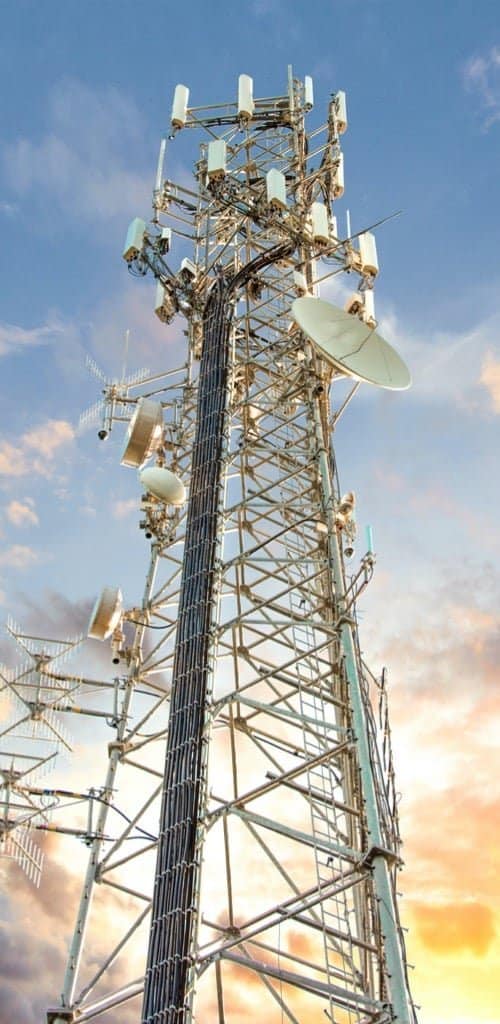If you've ever walked through a city and spotted tiny mini 5G cell towers on street light poles. They look like small boxes however, they're actually transmitting wireless signals from cellular providers to your mobile.
They are replacing the larger built cell towers. While they're less noticeable however, they could cause problems for people.
The of the FCC's Radiation Exposure Thresholds
The FCC's Radiation Exposure Thresholds define the safe limit at which a person can be exposed to electromagnetic energy generated by wireless devices. safe distance from cell tower for exposure are based on scientific data that show that RF energy could be harmful to human health.

The absorption rate specific (SAR) is an indicator of the radiofrequency energy that is absorbed by tissue. It is typically 1.6 Watts per kilogram spread over a gram of tissue.
However, because 5g transmits at higher frequencies, it has the potential to increase the intensity of energy on the skin and other directly-exposed body areas. This could result in various potential harms, including exacerbated formation of skin disorders such as dermatitis and cataracts and skin cancer.
Because of the potentially negative effects of 5G radiation, PSU has chosen to create a general power density limit of 4 mW/cm2 measured on 1cm2, and never to exceed 30 minutes for the entire 5G spectrum at 3000 GHz. This localized limit is in accordance with the peak SAR spatial-average of 1.6 W/kg averaged over 1 g of tissue at 6 GHz.
The FCC's Maximum Exposure Thresholds for Maximum Exposure
If you've ever used a cell phone, you're probably aware that a safe distance from the tower is around 400 meters away. This is because the power of transmission from cell towers increases drastically the further your location from the tower.
Although more info may sound like something that's good, the reality is that those living close to towers could be more prone to health problems. For instance, a 2014 study in India discovered that people who lived within 50 meters of cell towers experienced significantly more health complaints than those who lived farther far from antennas.
However, this study also showed that residents who moved into areas farther away from the cell towers saw their symptoms improve within a couple of days. Another study has revealed that exposure to high levels of radiofrequency electromagnetic fields (EMFs) can lead to brain tumors, cancer and other health issues.
This is because RF radiation, used in wireless communication, can be absorbed by the body's outer layer of skin. This is important to understand since the skin serves as a shield against injury to the body, infection by pathogenic microorganisms, and entry of toxic substances. The skin is the largest organ of the human body. It is responsible for maintaining the integrity of other organs.
The FCC's Minimum Exposure Thresholds for the Minimum Exposure
The FCC's Minimum Exposure Thresholds rely on several assumptions that aren't supported by scientific evidence. These include the erroneous assumption that short-term exposures to RF radiation are safe because of the minimal absorption into body (i.e. the heating of tissues).
The assumption also ignores the more extensive penetration of ELF components of modulated RF signals as well as the effects of brief bursts of heat from pulsed RF waves. These assumptions do not correspond with current knowledge of the biological consequences of RF radiation, and thus, they should not be considered for health protection exposure standards.
Additionally to that, ICNIRP and FCC are limiting their exposure limits to local peak SARs that are based on the maximum spatial specific absorption rate (psSAR) that is not a sufficient dosimetric tool to assess the amount of radiation exposure. Particularly the psSAR tool is not accurate for frequencies above 6 GHz. Furthermore, psSAR has not been tested for RF radiation with co-exposure to other environmental agents , such as sunlight. The interactions of RF radiation with other environmental agents could cause synergistic or antagonistic results. This can lead to the risk of having adverse health adverse effects. For example, co-exposure to RF radiation along with exposure to sunlight can raise the chance of developing skin cancer, as well as aggravate other skin conditions like acne.
